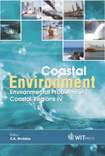Wetland Vegetation As Affected By Water Regime Of Two Coastal Marshes
Price
Free (open access)
Transaction
Volume
58
Pages
Published
2002
Size
448 kb
Paper DOI
10.2495/CENV020051
Copyright
WIT Press
Author(s)
S Kalpakis, S E Tsiouris & M Noidou
Abstract
Among the very few wetlands remaining in Halkidiki, Northern Greece, are the natural coastal marshes known as Gerani and Stavronikita in Nea Fokaia. In order to drain these wetlands a drainage system was established in 1971. The system operated for 20 years in Gerani and 28 years in Stavronikita. The most important changes in the wetland vegetation were studied in both marshes during the period 1997 to 2000. In Gerani marsh as the water regime did not change drastically during the studied period, no marked vegetation changes were observed. In Stavronikita marked changes in the wetland flora distribution were observed from 1997 until 2000. The most significant changes were: a) The halophyte area was decreased, b) The Hordeum maritimum was translocated to the marsh periphery and c) The Typha sp. vegetation area increased at the expense of Scirpus lacustris, Vallisneria spirallis and Chara sp. 1 Introduction At the beginning of the twentieth century Greece had threefold wetland area than today. Wetlands were drained in order to confront problems such as malaria, flood damage to property and to acquire new farmland (Tsiouris [1], Gerakis [2]). The highest wetland losses took place in Macedonia from 1930 to 1990: the 73.2% of fresh water wetlands area was lost, while the new artificial wetlands which were created represent only the 5.5% of the area (Psilovikos [3]). The
Keywords





